Two Fathers Lost Their Sons the Same Way, But In Grief Their Paths Diverged
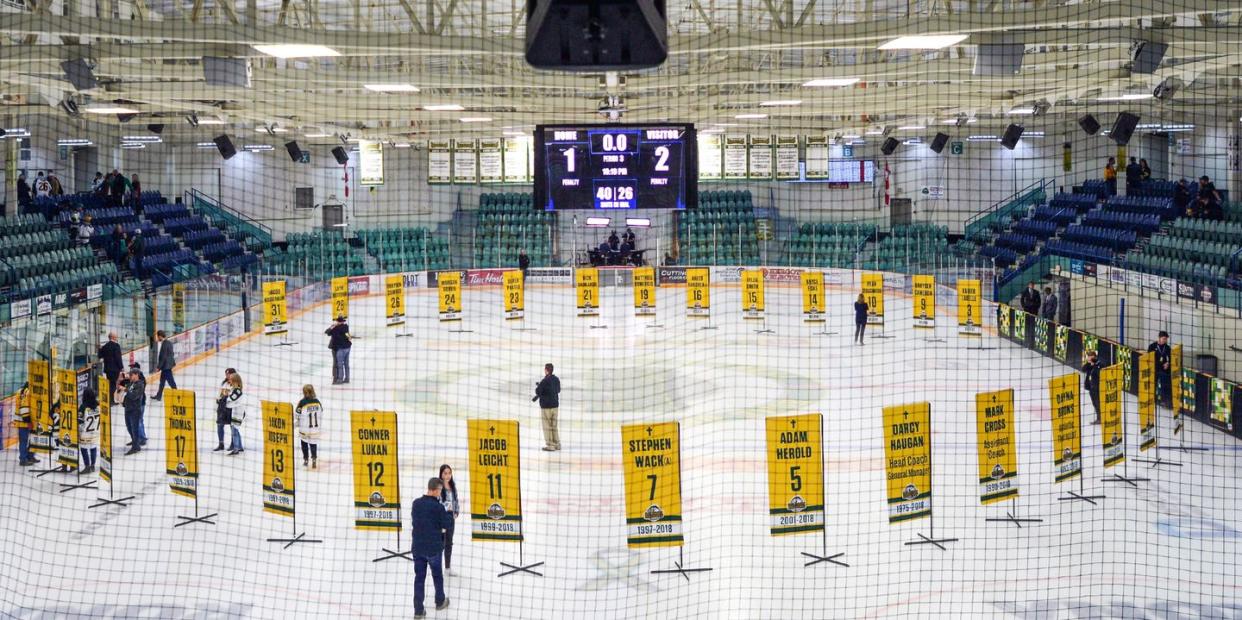
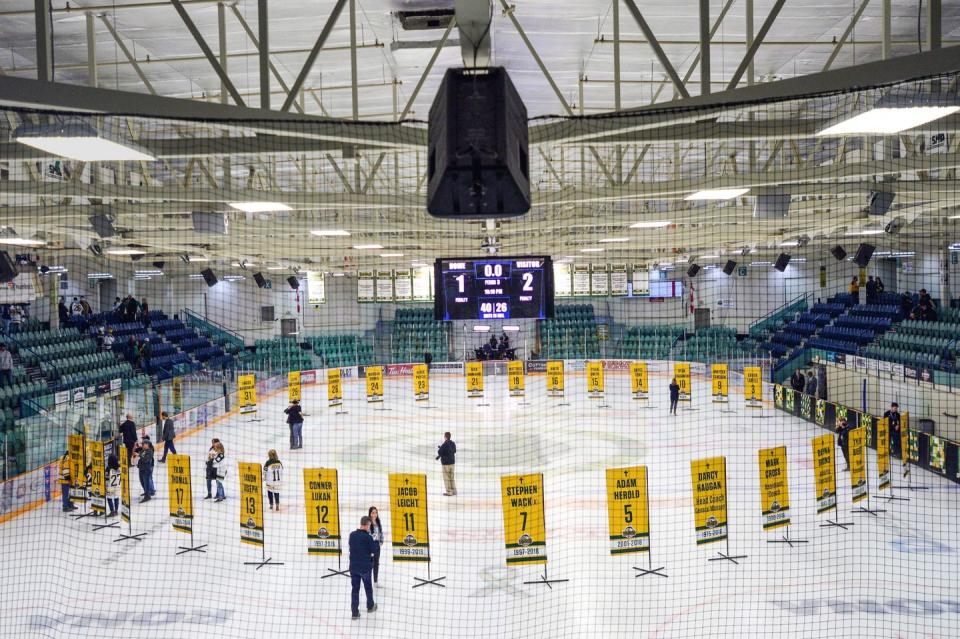

On an arrow-straight stretch of prairie highway, a bus carrying the Humboldt Broncos junior hockey team traveled northbound toward the town of Nipawin, Saskatchewan, home of the rival Hawks. It was a gorgeous late afternoon, bright and clear.
The Broncos were the pride of Humboldt, a farm town of about fifty-nine hundred in central Saskatchewan, where players from out of town live with local families and hockey is like a religion. The team was heading to an elimination playoff game, but the mood on the bus was upbeat: Players, some as young as sixteen, joked around, listened to music, and believed, against the odds, that they could still win the series. They had dyed their hair mustard yellow in playoff solidarity, and somebody had sneaked a half bottle of rum onto the bus in case of celebration.
The Broncos were the most successful team in the history of the Saskatchewan Junior Hockey League (SJHL) yet had been on a bit of a losing streak in recent years. That season was a turnaround year, however, thanks in part to the team’s coach, Darcy Haugan, a forty-two-year-old husband and father from Peace River, Alberta, who believed in recruiting players of good character. When a snowstorm hit town, Haugan would cancel practice and send his guys out with shovels to help the community dig out. He was a fan of one-liners and dad jokes and said things like “It’s a great day to be a Bronco, gentlemen.”
The team went 33–19–3–3 that season, under the leadership of veteran center Logan Schatz, the twenty-year-old captain; Conner Lukan, twenty-one, a force in the locker room; and eighteen-year-old goalie Jacob Wassermann, an SJHL rookie of the year. The Broncos were an exceptionally close group that year. They’d often watch episodes of The Bachelor together and gather before games in the office of trainer Dayna Brons, a much-loved twenty-four-year-old who grew up just outside Humboldt and traveled on the team bus. The players weren’t paid; a couple might go on to play pro somewhere, but most were hoping for a university scholarship, or for a few more years of competitive hockey before getting on with their futures, which must have seemed boundless.
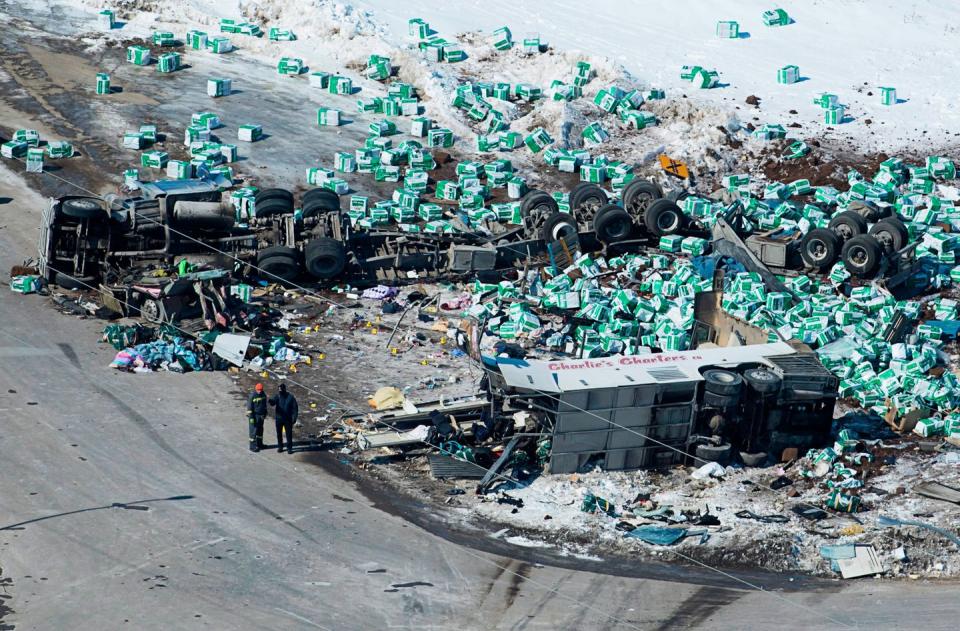
On April 4, 2018, two nights before the game, the Broncos had lost in triple overtime to the Hawks. The crowd stayed for nearly a full extra game of hockey. During a power play in the third overtime, the Hawks slipped the puck past Wassermann. It was a crushing defeat.
Now the Broncos were down 3–1 in the best-of-seven semifinal playoff series. As the bus approached the intersection of highways 35 and 335, some of the guys had started changing into their shirts and ties to prepare for the game.
At the same time, a semitruck loaded with peat moss and pulling a pup trailer traveled westbound. The driver, Jaskirat Singh Sidhu, twenty-nine at the time, was a newly married permanent resident from India who lived in Calgary, Alberta. He was a novice commercial driver, with only a few weeks of road training. He was sober and undistracted by his cell phone. His view was unobstructed. He became concerned about a loose tarp on the trailer, diverting his gaze as he passed five warnings, including a flashing stop signal, about the only controlled intersection for miles in any direction.
At approximately 4:53 P.M., the Broncos’ bus driver, fifty-nine-year-old Glen Doerksen, noticed the truck speeding toward the intersection. “Whoa!” he screamed. Some of the guys stood to see what was happening. Doerksen slammed on the brakes, and the bus skidded almost eighty feet into the intersection at between sixty and sixty-six miles per hour, T-boning Sidhu’s trailer.
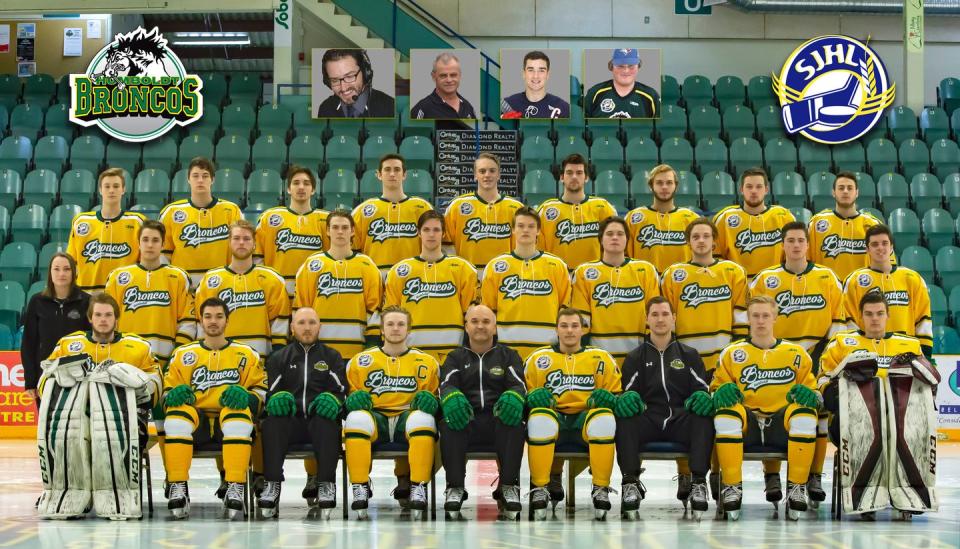
The truck flipped, and the bus was ripped in three pieces, its front obliterated and everything above floor level sheared off. Passengers were thrown across the asphalt and into a frozen ditch. Fourteen people died at the scene, including Doerksen, Haugan, and Schatz. In the frenzied aftermath, the survivors, some so disfigured they were unrecognizable, were rushed to nearby hospitals. Brons and another victim died within the week. In an instant, dozens of lives on the bus and beyond were ripped apart in one of the worst sporting disasters in North America in nearly fifty years. For those involved, on the bus and off, the tragedy was only beginning.
Scott Thomas is a classic Canadian hockey dad. Broadly built, with a cherubic face, light-brown eyes, and stubble, he played in the Western Hockey League when he was young and, after becoming a chiropractor and settling in his hometown of Saskatoon, Saskatchewan, became a devoted youth coach. He coached his son, Evan, at almost every level before Evan moved to Humboldt to join the Broncos at age eighteen.
Evan, with a bright smile and a birthmark on his right cheek, was a gifted athlete, and he loved being a teammate. He thought he might become a surgeon after his hockey career ended—he sometimes watched Grey’s Anatomy with his mom, Laurie, to soak in the surgery scenes.
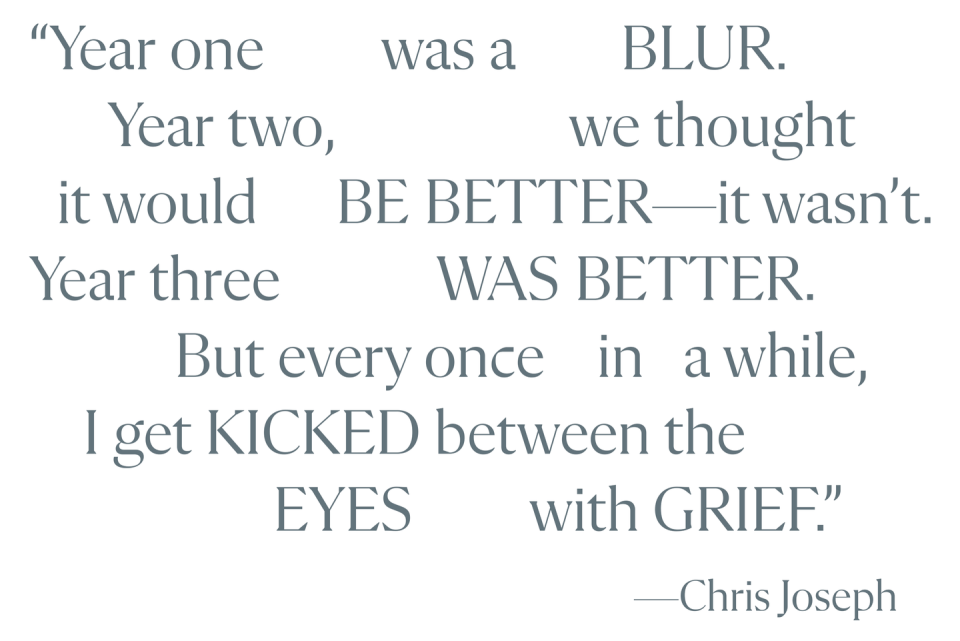
On the afternoon of game 5 against the Hawks, Thomas set off from Saskatoon, Saskatchewan’s largest city, to Nipawin to watch what could be the last game of the season.
In the car with another dad, Cal Hobbs, Thomas texted Evan.
Hey bud, just leaving, see you after the game.
No problem Dad.
Good luck.
When they were about an hour and a half east of Saskatoon, Hobbs’s Bluetooth rang. It was his son, Declan, a player for the Hawks.
“Why the hell is Declan calling at this time?” Hobbs said to Thomas. “He should be at the rink.”
Declan said there’d been an accident involving the Broncos’ bus. “It’s bad,” he said, after a pause. “It’s really bad.”
Hobbs and Thomas turned north. A helicopter buzzed overhead, and ambulances passed them on the highway. Thomas called and texted his son, but there was no response.
Chris Beaudry, an assistant coach for the Broncos, was driving on his own, about twenty minutes behind the bus. When he reached the town of Tisdale, forty minutes from Nipawin, the Hawks’ assistant called. He said he heard there had been an accident. Could Beaudry try to find out more? He figured it must be a flat tire and that the game might be delayed for forty-five minutes or so.
But as he approached the scene, he could see it was much worse. The bus was in pieces, and the truck was on its side. He could make out bodies on the highway and in the ditch, bodies in the seats.

This article appeared in the SUMMER 2022 issue of Esquire
subscribe
Somebody from a nearby farm had brought stacks of blankets, and volunteers covered the passengers with them. When first responders arrived, they rushed from person to person, climbing over the remains of the bus looking for signs of life. The scene, illuminated by red and blue flashing lights, was eerily quiet as paramedics did their hectic work.
Many passengers were obviously deceased, some pinned in the wreckage. Others, it was difficult to tell because of the severity of facial trauma. Some were conscious, covered in blood but moving. The Broncos’ Ryan Straschnitzki, nineteen, was thrown outside the bus, all the way to where the truck had overturned. He couldn’t feel his legs and drifted in and out of consciousness, asking a nurse at the scene, “Are my friends all dead?” The injured were placed in ambulances and rushed to hospitals in Nipawin and Tisdale. Other cases were transported to Saskatoon by helicopter.
Sidhu, the truck driver, who had escaped death by a fraction of a second, crawled out of his overturned semi unharmed. He stayed at the scene and cooperated with police. Thomas and Hobbs arrived at the intersection of 35 and 335 about an hour after the crash, but the police wouldn’t let anybody through. The fathers of players Xavier Labelle and Brayden Camrud were there, pacing back and forth in the quiet cold, waiting for information.
Chris Joseph was frantically trying to get any news he could about his son, Jaxon, a twenty-year-old forward with the Broncos, as he rode with his family from their hometown of St. Albert, Alberta, to Saskatoon. Joseph, an NHL journeyman turned firefighter, is normally a calm figure. But that night, he was anything but. This was about his son—the same little boy he had coached from his very first team, the Eppelheim Polar Bears, in Germany, where Joseph had played after the NHL.
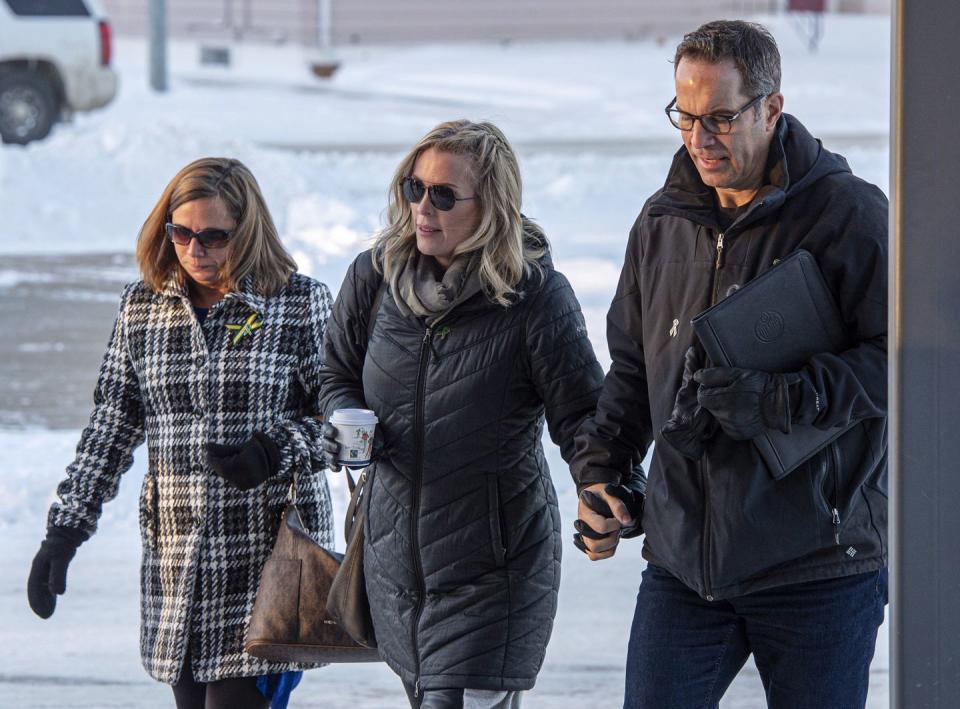
It was Jaxon’s first year with the team. He was a classic middle-brother type who loved joking around with teammates and fostering harmony, much as he did with his own family.
Jaxon’s parents had seen him just two days before, in Humboldt, where they’d traveled to watch the game 4 overtime loss. The family met at a pizza place afterward, and Jaxon was distracted. He hadn’t played well and was worried he might not play at all in game 5. Plus, he was with a new girlfriend, Quinn, who was meeting his mom for the first time. Jaxon had recently told Quinn he loved her.
The next morning, the Josephs met their son for a quick coffee; they weren’t planning to go to Nipawin for the game. “Good luck” was the last thing Chris Joseph said to Jaxon before setting off back home to Alberta.
Now, in the car speeding toward Saskatoon, Joseph was calling anyone he could think of who might have information about the crash. All he was getting was bad news, but nothing about Jaxon. Positive thoughts, he told himself. Just put out positive thoughts. Eventually, he heard Jaxon might have been airlifted to a Saskatoon hospital. He experienced a fleeting sense of relief. Okay, he’s alive, he thought. He’s in bad shape, but he’s alive.
In Nipawin, Scott Thomas and fellow Broncos family members, waiting for news about the fate of their loved ones, were directed to a local church, where police and some of the Hawks were gathered in the pews. After about two hours, Broncos families were taken into a room in the back of the church with several Royal Canadian Mounted Police (RCMP) officers. One of the officers said, “There’s no script for this, but we’ve had a very severe accident. We’ve got fourteen casualties at the scene.”
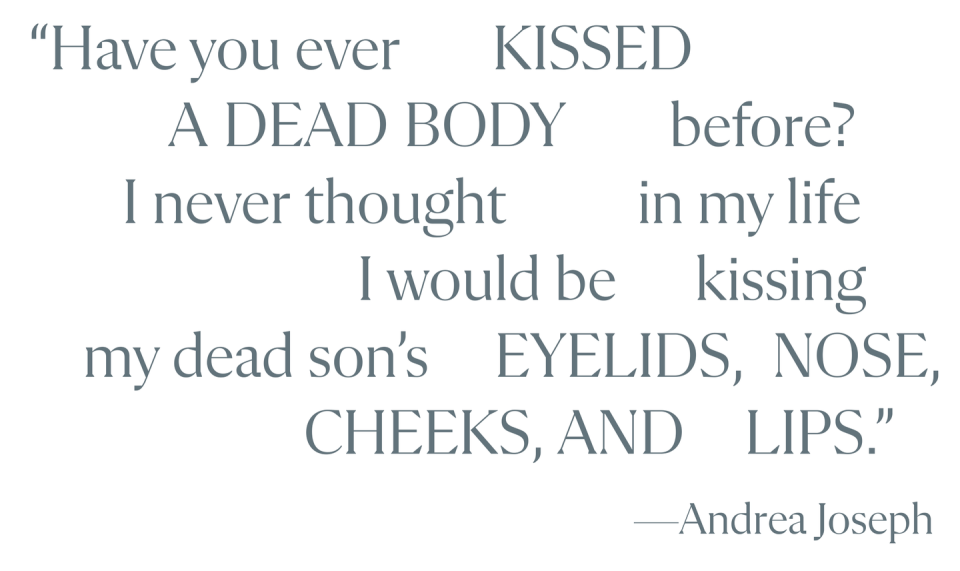
He read a list of names of those who police knew had been taken to the hospital either by ambulance or by helicopter. “If we didn’t read your son’s name,” the officer said, “that means they’re still at the scene.”
“What the hell does that mean?” asked Paul Labelle, the father of Xavier, an eighteen-year-old defenseman from Saskatoon.
“That means they’re gone,” Thomas said.
Chris Joseph and his family drove through the night to Saskatoon. They arrived at the Royal University Hospital after midnight on April 7 and were shown into a room with a Humboldt player who was badly injured, wrapped in bandages and unrecognizable but alive. Was this Jaxon? Joseph couldn’t tell. He looked in his mouth for evidence of a retainer. He lifted the blanket to look at his naked body, searching, agonizingly, for any indication that the young man lying in the hospital bed was his son. I don’t know.
The next day at noon, after a sleepless night in a nearby hotel, Joseph and his family received a call from the coroner’s office. Come to the funeral home, they said. Jaxon was there.
When Joseph walked into the viewing room, he knew in an instant that he was looking at Jaxon. He felt a flash of embarrassment that he’d ever thought the player in the hospital last night might have been his son. This boy I’m looking at now, this is my boy.
The week after the crash brought the twenty-nine Broncos families one agony after another. In the hospital in Saskatoon, the parents of goalie Parker Tobin, eighteen, remained at his bedside, waiting for their son to wake. He had a fractured skull, more than twenty broken bones, and a gash that ran down his forehead and across his face. He’d had surgery to put screws in his spine, he couldn’t speak, and he was heavily sedated.
All the while, the family of Xavier Labelle had been told their son had died. They’d even gone to a makeshift morgue to identify bodies. But when the player back in the hospital woke up, he spoke French—a language Parker Tobin didn’t know. It wasn’t Parker after all; it was Xavier. Because of their similar builds, bleached-blond hair, and physical trauma, the two young men had been mixed up. Parker’s family had been holding vigil at the bedside of another family’s son.
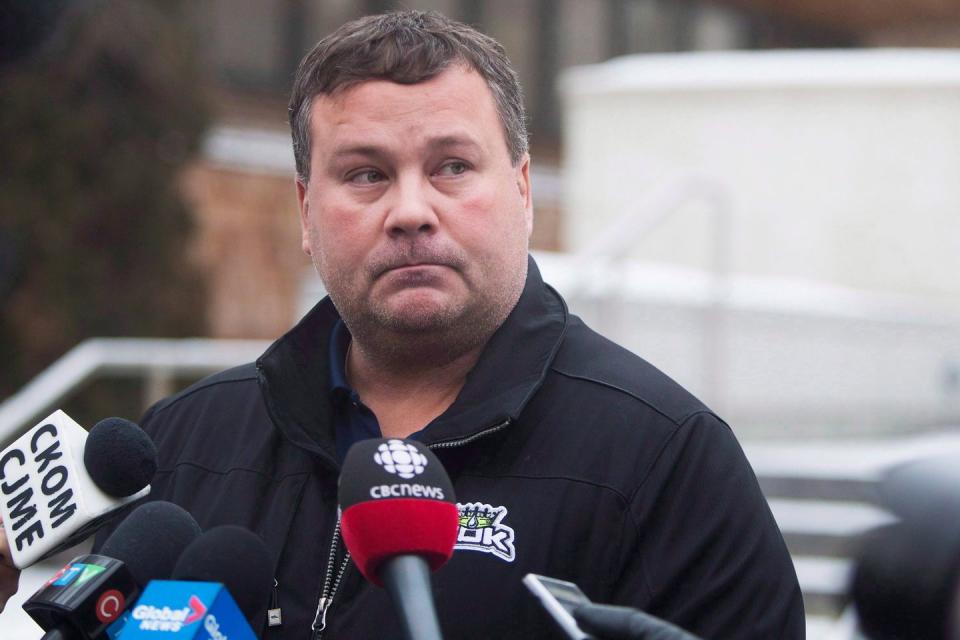
In the midst of everything, the Humboldt bus crash had become an international news story. Queen Elizabeth and President Trump offered their condolences, NHL games featured moments of silence, the rapper Drake wore a Broncos jersey to a Toronto Raptors game, and a GoFundMe campaign would go on to raise almost $12 million to assist the victims’ families.
On April 8, a vigil was held at Elgar Petersen Arena in Humboldt. The players’ cars were still in the parking lot, adorned with flowers. The RCMP, meanwhile, was piecing together what had happened the day of the crash.
Jaskirat Singh Sidhu’s eighty-three-foot truck was loaded with nine hundred bales of peat moss; the total weight of the vehicle and its load was more than one hundred thousand pounds. He told police that the tarp had come loose earlier in the day and that he didn’t realize an intersection was coming up. He’d made no attempt to brake.
Doerksen, the Broncos’ driver, had the right of way and did not slow down as he approached the intersection. His view was obstructed by a copse of trees on a farm at the southeast corner, and by the time he saw Sidhu’s truck barreling toward the intersection, there wasn’t enough time to swerve or stop.
It wasn’t the first time the intersection had seen tragedy. In 1997, six family members were killed at the same spot. The blinking warning light Sidhu had missed was added in the aftermath, but other recommendations, such as rumble strips to alert drivers of a coming stop, were not.
Though Sidhu was physically unharmed in the crash, it brought the stable life he was building for himself in Canada to an end. He had grown up in rural India and completed a commerce degree before following his girlfriend, Tanvir Mann, to Canada in 2014. He earned a diploma in Calgary and worked part-time at a liquor store. He then obtained his trucking license in 2017 but didn’t begin driving commercially until the next year. That February, he and Mann were married in India. They returned to Canada in March, a month before the accident.
In nine out of ten Canadian provinces at the time of the crash, comprehensive truck-driver training was not mandatory—across the country, more strenuous training was required for a hairdresser than for an inexperienced driver getting behind the wheel of one of the most dangerous vehicles on the road.
Sidhu was employed by a Calgary-based trucking company, and he had spent just one week training, two weeks on the road with another driver, and one week by himself. As he acknowledged in court, he was in way over his head. Although he had a clean driving record and no criminal record, Canadian outlets reported at the time that he had violated fifty-one federal and nineteen provincial regulations between March 26 and April 6.

Three months after the crash that claimed the life of his son, Evan, Scott Thomas was at a golf tournament when a reporter called. He asked if Thomas knew that police had charged Sidhu with twenty-nine counts of dangerous driving causing injury and death. It was the first time Thomas had heard the name of the man responsible for Evan’s death.
Thomas wasn’t certain how he should feel about Sidhu. His grief was overwhelming. So was his anger, and he often ruminated on the circumstances of the crash: How could you miss that fucking stop sign? It’s four feet wide with a blinking red light.
He would attend Sidhu’s hearing. He wanted to see the man who had killed his son. He wanted Sidhu to look him in the eye. But Thomas also wanted to know if he could forgive.
In St. Albert, Chris Joseph’s mission in the months after the accident was to find something, anything, that could get him through the day. There had been an endless stream of visitors to his and his wife Andrea’s home in the weeks after the crash. Eventually, it became too much, and the Josephs placed a sign out front thanking supporters but also asking them to respect the family’s privacy. Joseph needed to take time off work. He told the firehouse he’d be gone for two weeks; he ended up staying out for six months.
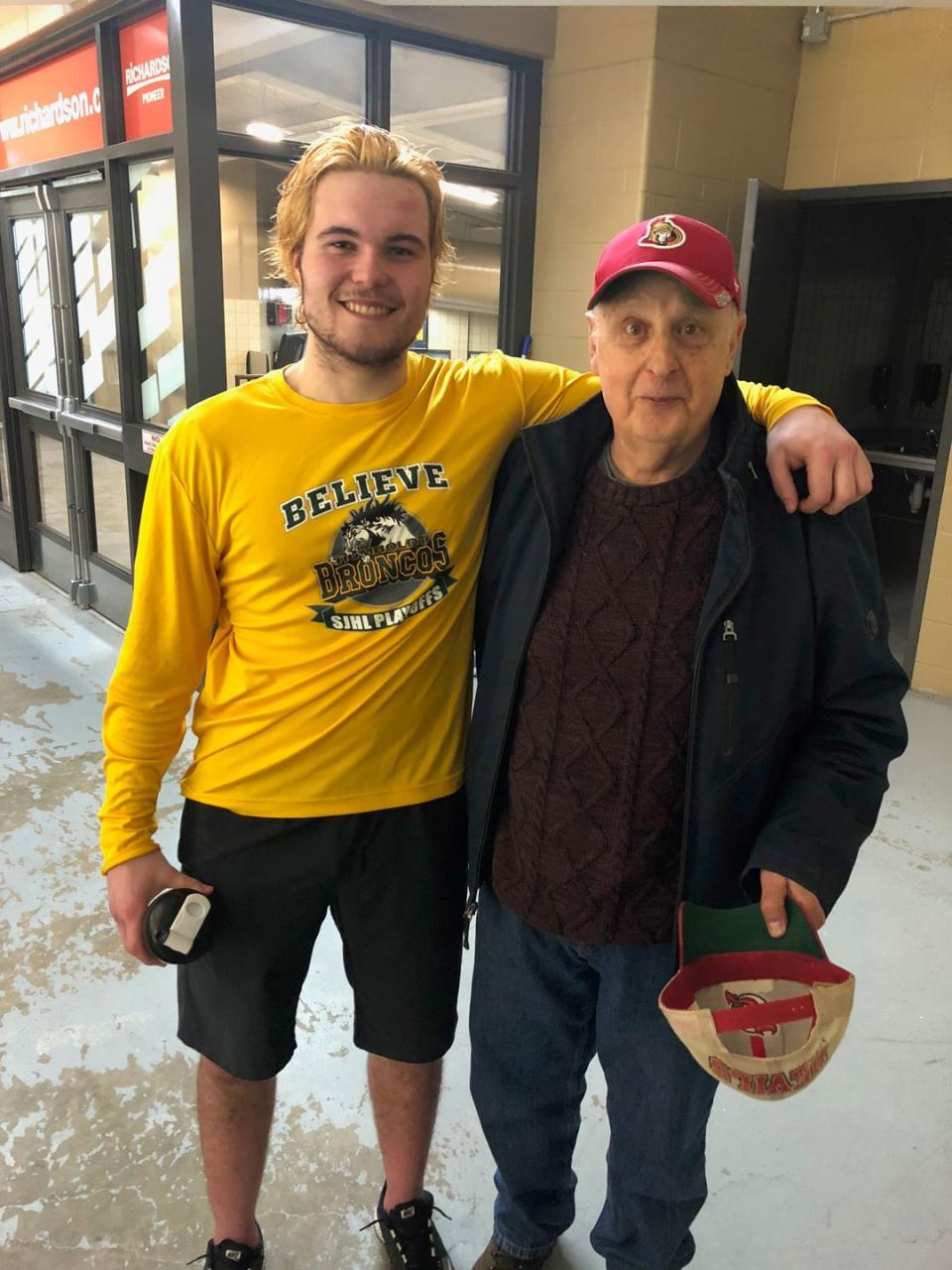
Joseph has a broad and sincere smile, and when he talks about Jaxon, he beams. His gaze drifts, as if he’s entering a different space, a different time, one where Jaxon is still there. But the smallest thing could send him on a downward spiral. A song—“You Should Be Here,” by Cole Swindell, for instance—could trigger a brutal swell of emotion. He agonized over Jaxon’s lost potential, not as a hockey player but as a young man.
Joseph had made himself available to the media, and the publicity became a double-edged sword. It meant people knew Jaxon’s name and allowed Joseph to talk about his son and his anguish. But it also meant he was constantly living in his loss. He was reminded of the crash all the time—in images of the site, stories of survivors, and, mostly, reports about Sidhu.
As the case against Sidhu progressed, Joseph remained “knee deep in it”—reading government reports, police reports, and news about the investigation. He studied trucking regulations and dissected Sidhu’s story for inconsistencies. He saw it as a way to fight for Jaxon, to keep Jaxon’s legacy alive, to push for reform in the Canadian trucking industry, and to see the man responsible bear the legal consequences of his actions.
Joseph questioned Sidhu’s version of events, and he came to believe that the driver deliberately ran the intersection. “He didn’t wake up with the intent to hurt anyone. I do believe that,” Joseph says. But “Saskatchewan is quiet. He took a chance. There were five signs—how do you miss five signs?”
Joseph’s feelings about Sidhu weren’t motivated by malice or hatred, he says. They were motivated by a sense of justice and, more than that, by his unimaginable grief.
Whatever punishment Sidhu faced, Joseph believed, would pale in comparison with the punishment his own family would endure for the rest of their lives: the daily reality that Jaxon was never coming home. For that, Joseph could not forgive now, and he wasn’t sure he would ever be able to.

Escorted by his lawyers, Sidhu arrived at a makeshift courthouse in Melfort, Saskatchewan, wearing a black suit and tie, with cropped black hair, a beard, and dark circles under his eyes. A few weeks earlier, on January 8, 2019, he pleaded guilty to all twenty-nine counts against him. After his sentencing, he accepted responsibility, apologized to the families directly, and wept.
“I’ve taken the most valuable things of your life,” he told those assembled in the courtroom. “I take full responsibility for what has happened. It happened because of my lack of experience, and I am so, so, so, so, so sorry.”
Over the course of the four-day hearing, many of the ninety victim statements were read into the record.
“I have no forgiveness,” said Robin Lukan, the mother of Conner Lukan. “No consequences, no sentence, no apology, no admission of guilt will ever be enough to fill the void that has been left.” Andrea Joseph, Jaxon’s mother, asked Sidhu, “Have you ever kissed a dead body before? I never thought in my life I would be kissing my dead son’s eyelids, nose, cheeks, and lips over and over again, as I knew this would be the last time I would ever feel his skin under my lips.”
Others reached for forgiveness, or something close to it. Head coach Darcy Haugan’s wife, Christina, told Sidhu: “I forgive you. There are days when the unjustness and sadness are definitely still there, but I have been forgiven for things when I didn’t deserve it, so I will do the same.”
Scott Thomas wrestled with his own statement. Some of the letters he wrote felt like lectures. Some felt meandering. In the end, he drafted a statement not addressed to Sidhu but to Evan, about all the ways his family missed him. “Hi, Son, it’s Dad,” Thomas read when his turn came. “God, we miss you. We miss you every waking moment of every day. We miss your smile. We miss your laugh. We miss everything about you.”
One night, Thomas woke up struggling to breathe. He felt like he was choking and reached for a silver chain dangling from his neck. It carried two pendants: one with Evan’s thumbprint, the other with the Broncos’ logo on the front and Evan’s number—17—engraved on the back.
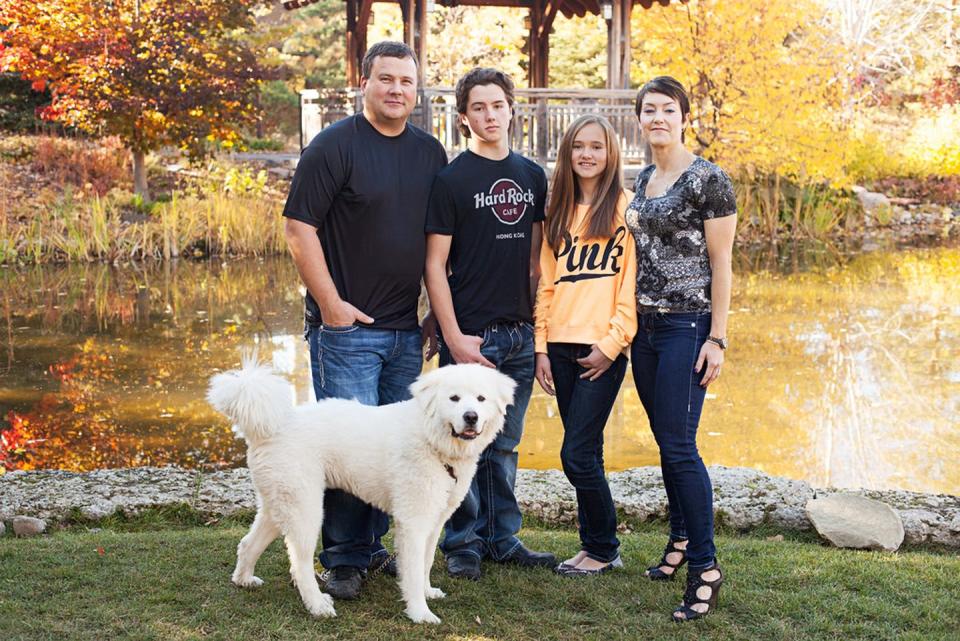
A friend of a friend had recently texted the Thomases, saying she’d had a vision that Evan wanted his parents to let Sidhu know he forgave him. It was something Scott and Laurie had spoken about. They just couldn’t shake the feeling that Evan would want them to forgive. “Maybe we gotta let this guy know there are some people out there who care about him,” Thomas said.
The day after Thomas addressed the hearing, he and Laurie finally wrote a letter to Sidhu in their hotel room. Thomas placed it in an unsealed envelope along with the Broncos pendant he wore around his neck. In court, he gave the envelope to Sidhu’s attorney.
During a lunch break, one of Sidhu’s relatives tapped Thomas on the shoulder. “If you’d like, Jaskirat would love to speak with you.”
Thomas looked at his wife and daughter. “Holy shit,” he said. “Sure.”
He waited in a courthouse anteroom reserved for the defendant and his family. Thomas turned around to see that Sidhu was already down on one knee, sobbing. He took Thomas’s hands, and Thomas lifted Sidhu up. The two embraced and cried.
Thomas wiped his tears. “What happened?” he asked the truck driver.
“I don’t know, I don’t know, I don’t know. I’m so sorry, I’m so sorry, I’m so sorry,” Sidhu said over and over.
Thomas gave Sidhu his cell-phone number, and Sidhu touched the pendant Thomas had given him, which he wore around his neck. “I’ll keep this for the rest of my life,” he said.
On March 22, 2019, provincial-court judge Inez Cardinal sentenced Sidhu to eight years in prison. It was shorter than the maximum sentence of fourteen years but still the longest in Canadian history for an accident that involved the driver of a heavy truck or semi unit. The judge accepted Sidhu’s version of events but still expressed disbelief that the crash could have happened at all.
The prison term wasn’t the only punishment Sidhu would face. According to Canadian law, because he was a permanent resident of Canada rather than a citizen and his sentence was longer than six months, Sidhu would likely be deported upon his release. He could challenge his deportation, and in January 2021, his immigration lawyer did just that, submitting a petition with the Canada Border Services Agency for Sidhu to stay in the country after serving his sentence.
Sidhu’s attempt to stay deeply divided the Broncos families, and it thrust both Scott Thomas and Chris Joseph back into the spotlight.
Thomas wasn’t the only relative of a crash victim to forgive Sidhu, but he did become the public face of forgiveness, regularly appearing in the media to tell his story. He said he’d spent countless hours turning the case inside out in his mind, and he believed in the end that Sidhu had accepted responsibility for his actions, that he was remorseful and serving his just punishment, and that deporting him from Canada would help nobody.
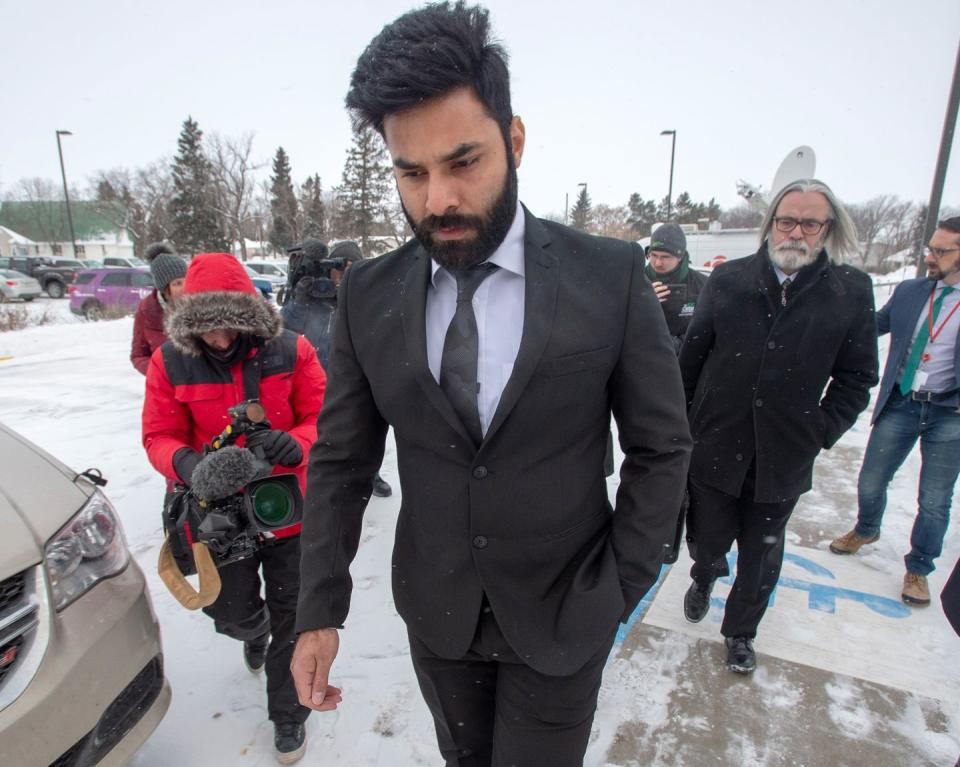
Plus, Thomas considered that there were other sources of blame for the accident, maybe more deserving of his anger: the trucking company that put Sidhu on the road with such little training, for example, or the government of Saskatchewan for its lax trucking laws and failure to improve the intersection after the first deadly crash, in 1997.
Thomas wrote a letter, as did two other families, supporting Sidhu’s attempt to stay in Canada. The letters were included in Sidhu’s petition. For Thomas, it wasn’t just about Sidhu. Forgiveness was a way to set aside anger, a necessity in order for his family to mourn and heal. Most of all, it was a way to honor Evan.
But the Thomases’ position wasn’t a popular one among Broncos families. By all accounts, the large majority of them wanted Sidhu deported and were not ready to forgive the man who’d killed their boys. They also felt burned by their portrayal in the Canadian press, which has mostly looked favorably upon Sidhu’s attempt to stay in the country. Many of the Broncos families who supported Sidhu’s deportation believe they were painted unfairly, as angry and immovable, and that their grief and viewpoints on the case have been downplayed in favor of the redemptive narrative of forgiveness.
In the summer of 2021, a series of stories began appearing in the Canadian media about Sidhu’s case. They focused on his fight to remain in Canada and on the theme of forgiveness: “Forgiving Jaskirat Sidhu,” “The Humboldt Driver,” “Hoping to Stay.” Chris and Andrea Joseph appeared in many of these stories, advocating for deportation. They talked of being constantly reminded of Sidhu with follow-up features about his life in Canada, or of running into him at an intersection in Calgary. They sometimes wonder why he’d even want to stay in Canada at all, where he’ll always be known as the driver who killed sixteen people. The way Joseph sees it, the law is the law.
He also wanted Sidhu’s deportation to be a deterrent, so that no more parents would have to go through what his family was suffering. He won an award for advocating for stricter laws concerning transportation and safety on buses, but so little had changed since the crash that it could feel as if he were pounding his head against a wall. And what if Sidhu was allowed to stay in Canada? What lessons would be learned from that?
“The thing that would make me happiest—and it wouldn’t make me happy—is deportation,” Joseph says. “It shouldn’t be about how you feel about him. . . . The law says he should be deported. Just the fact that he’s fighting it shows he’s not remorseful enough.”
The coverage of Sidhu’s story also rankled the Josephs, who often felt like minor, dissenting figures in media accounts. During one program, when a long interview Chris had granted was cut to just a few seconds, he was so furious that he screamed at the television set and Andrea cried. He felt “like a footnote in a love story.”
Since his incarceration, Sidhu has spent his time reading books and meditating to deal with PTSD and anxiety. He’s struggled to sleep, haunted, he has said, by the screams of the survivors on that fateful day.
In March 2022, a month before the fourth anniversary of the crash, the Canada Border Services Agency ruled on Sidhu’s case: His first bid to stay in Canada was unsuccessful. One remaining possibility to avoid deportation is a challenge in federal court.
Scott Thomas was disappointed but not surprised by the ruling; he saw it as a missed opportunity to have an honest conversation about Canada’s broken trucking industry. Joseph saw the ruling as justice prevailing, and a small relief in the ongoing suffering of the twenty-nine Broncos families.
Sidhu’s fate is settled for now, but for Thomas and Joseph, another battle goes on: getting up each morning and putting one foot in front of the other in the wake of immeasurable loss.
Chris and Andrea Joseph have kept Jaxon’s room exactly as he left it. Joseph, who has a tattoo honoring his son, is acutely aware that marriages often fall apart after tragedy, and it’s something he and Andrea regularly work on. Sometimes they have blowups, and they have to remind each other that they need to be kind to one another, to support each other.
Their daughter was in a car crash recently and broke both wrists. She was okay in the end, but the trauma ushered back the horror of losing Jaxon. Joseph cried for two days. The grief doesn’t go away, he says; it only gets slightly more manageable. “Year one was a blur. Year two, we thought it would be a little better—it wasn’t. Year three was better—we did a lot of counseling. But every once in a while, I get kicked between the eyes with grief.”
Five families, including the Josephs, have filed a civil suit against Sidhu, the trucking company that employed him, the bus manufacturer, and the government of Saskatchewan. “If the money makes it right, then you have to,” Joseph says.
The Broncos families have also had modest success lobbying provincial and federal governments for changes in the trucking industry: Saskatchewan, British Columbia, Manitoba, and Alberta have now introduced mandatory entry-level training to obtain a trucking license.
The garage of Scott and Laurie Thomas’s suburban Saskatoon house is a shrine to Evan, strung with jerseys sent by well-wishers from around the country and beyond. Inside, there are photos of Evan everywhere, and memorabilia, and his hockey gear. You can almost feel his presence in the home.
Scott Thomas has a tattoo of Evan’s palm on his right forearm, from a print taken the day he saw his son at the funeral home. “Every time I meet somebody new, his hand’s right there,” he says. He has Evan’s high school graduation portrait on his left forearm. He also has Evan’s kindergarten handprint, and an image of his daughter holding her brother’s hand at the funeral home. Another tattoo features crosses at the crash site.
It has been a tradition for the Thomases to visit the site on the anniversary of the accident in April. There, on the northwest corner of highways 35 and 355, is a makeshift memorial for the victims. Someone has placed sixteen white crosses, emerging from windswept snow, one for each of the dead. Hockey sticks rise from the ground, some draped with faded Broncos jerseys. Full cans of beer have been left for the boys.
During his son’s memorial, Thomas said the souls of Evan and his teammates “exploded across the landscape” at the moment of the crash. Saskatchewan’s provincial motto is “The Land of Living Skies,” and there’s perhaps some comfort in Thomas’s image—that of a boundless horizon under a vast prairie sky, bright with stars.
You Might Also Like

